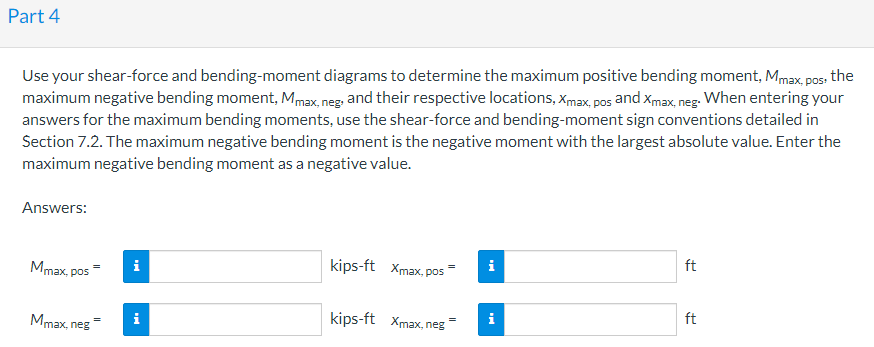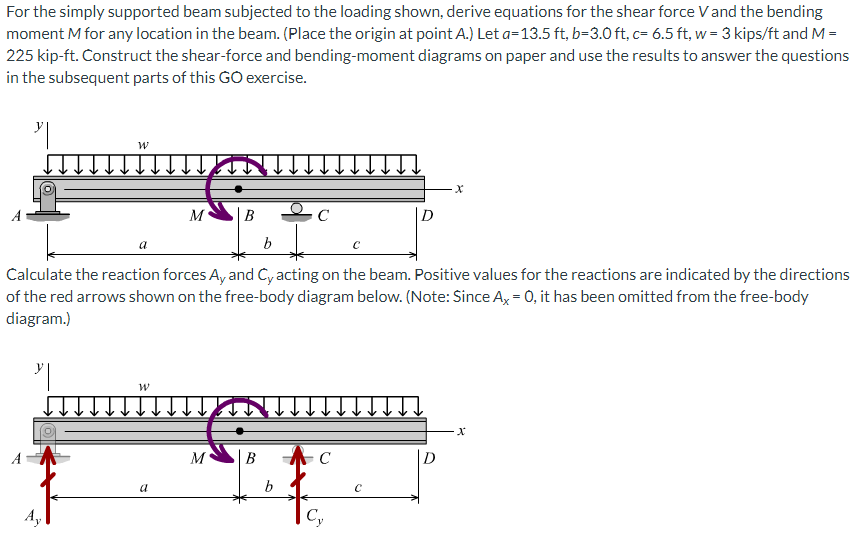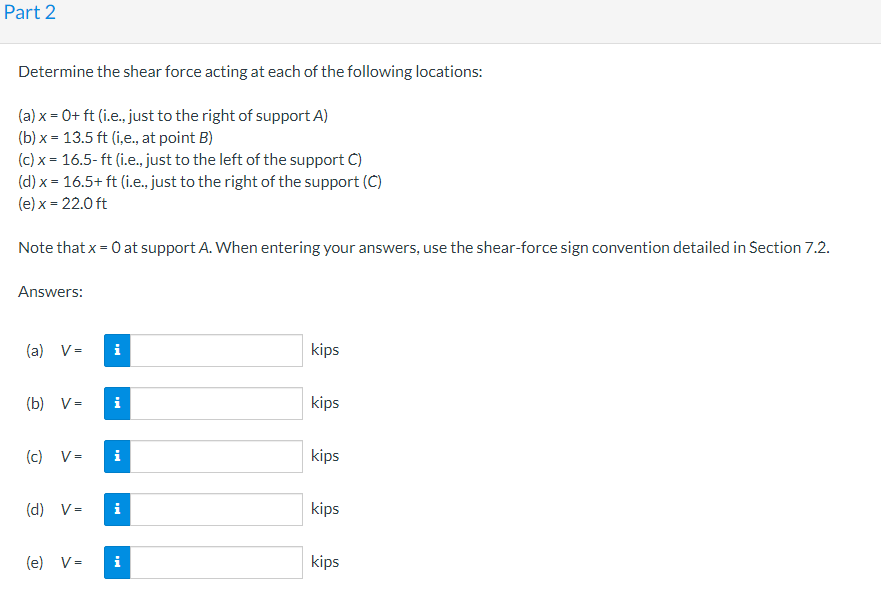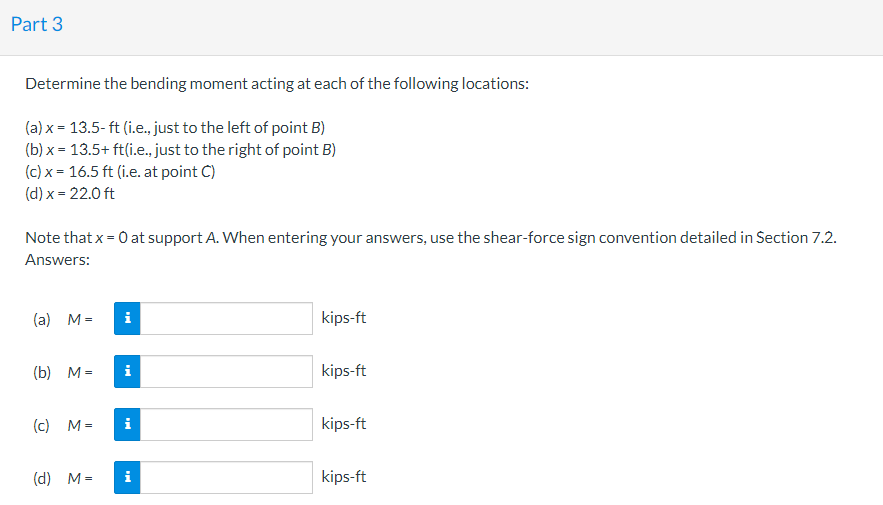Home /
Expert Answers /
Civil Engineering /
for-the-simply-supported-beam-subjected-to-the-loading-shown-derive-equation-pa657
(Solved): For the simply supported beam subjected to the loading shown, derive equation ...

For the simply supported beam subjected to the loading shown, derive equations for the shear force \( V \) and the bending moment \( M \) for any location in the beam. (Place the origin at point \( A \).) Let \( a=13.5 \mathrm{ft}, b=3.0 \mathrm{ft}, c=6.5 \mathrm{ft}, w=3 \mathrm{kips} / \mathrm{ft} \) and \( M= \) 225 kip-ft. Construct the shear-force and bending-moment diagrams on paper and use the results to answer the questions in the subsequent parts of this \( \mathrm{GO} \) exercise. Calculate the reaction forces \( A_{y} \) and \( C_{y} \) acting on the beam. Positive values for the reactions are indicated by the directions of the red arrows shown on the free-body diagram below. (Note: Since \( A_{x}=0 \), it has been omitted from the free-body diagram.)
Determine the shear force acting at each of the following locations: (a) \( x=0+f t \) (i.e., just to the right of support A) (b) \( x=13.5 \mathrm{ft} \) (i,e., at point \( B \) ) (c) \( x=16.5-f t \) (i.e., just to the left of the support C) (d) \( x=16.5+ \) ft (i.e., just to the right of the support (C) (e) \( x=22.0 \mathrm{ft} \) Note that \( x=0 \) at support \( A \). When entering your answers, use the shear-force sign convention detailed in Section 7.2. Answers: (a) \( V= \) kips (b) \( \quad V= \) kips (c) \( V= \) kips (d) \( V= \) kips (e) \( V= \) kips
Determine the bending moment acting at each of the following locations: (a) \( x=13.5-f t \) (i.e., just to the left of point \( B \) ) (b) \( x=13.5+ \) ft(i.e., just to the right of point \( B \) ) (c) \( x=16.5 \mathrm{ft} \) (i.e. at point C) (d) \( x=22.0 \mathrm{ft} \) Note that \( x=0 \) at support \( A \). When entering your answers, use the shear-force sign convention detailed in Section 7.2. Answers: (a) \( M= \) kips-ft (b) \( M= \) kips-ft (c) \( M= \) kips-ft (d) \( M= \) kips-ft
Use your shear-force and bending-moment diagrams to determine the maximum positive bending moment, \( M_{\max } \), pos, the maximum negative bending moment, \( M_{\max } \) neg, and their respective locations, \( x_{\max } \), pos and \( x_{\max } \), neg. When entering your answers for the maximum bending moments, use the shear-force and bending-moment sign conventions detailed in Section 7.2. The maximum negative bending moment is the negative moment with the largest absolute value. Enter the maximum negative bending moment as a negative value. Answers: \( \begin{array}{llll}M_{\max , \text { pos }}= & \operatorname{kips}-\mathrm{ft} \quad x_{\max , \text { pos }}= & \mathrm{ft} \\ M_{\max , \mathrm{neg}}= & \text { kips-ft } \quad x_{\max , \mathrm{neg}}= & \mathrm{ft}\end{array} \)


